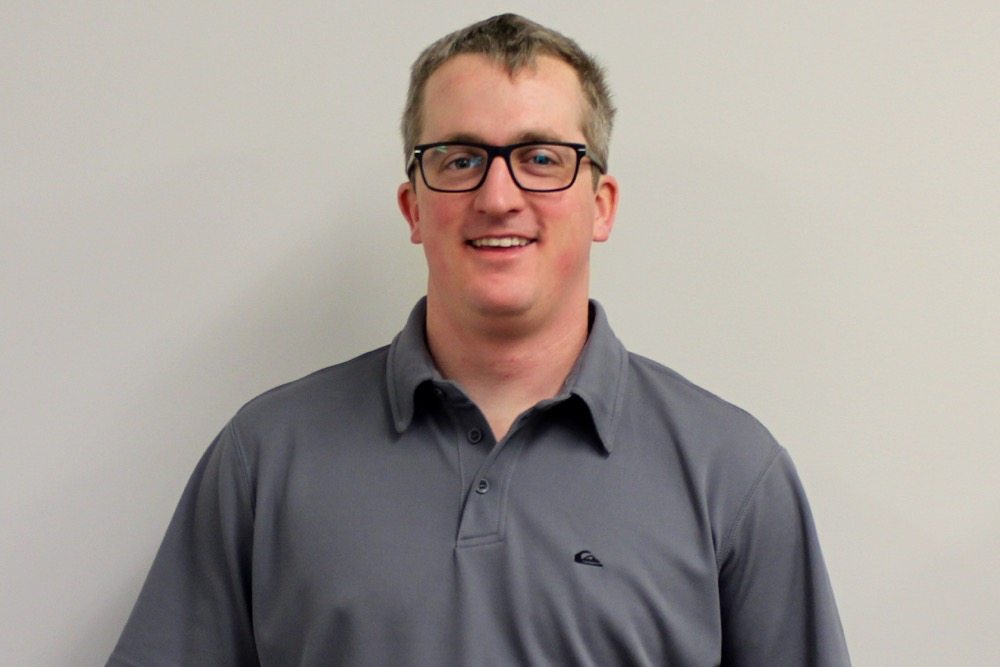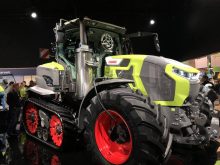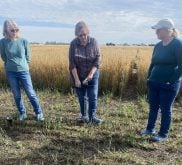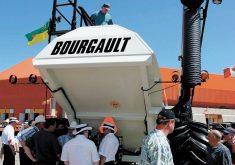Autonomous farm equipment would not only radically change how crops are produced, but the lives of farmers themselves.
Norbert Beaujot thinks they will embrace being freed from the tractor cab.
“At one end of the scale you get the young, 35- to 40-year-old farmer who really wants to get going with anything new and high tech,” said Beaujot, developer of the DOT Autonomous Power Platform, a self-driving machine with no cab.
“But at the other end we have farmers who are 80 years old saying they’re too old to get up and down from the tractor, but they still have a passion for agriculture. This would give them a way of still utilizing their brains and less of their brawn.”
Read Also

Grazing ‘sweet spot’ boosts pasture performance
Timing-focused approach to pasture management touted to boost forage growth, livestock gains while also cutting farmer labour and inputs
The human element is a big part of the DOT story, said Beaujot.
“I sat on a panel in Alberta recently and farmers’ biggest complaint was they were working like slaves for that month and a half of seeding and month and a half of spraying and harvest, and they didn’t have a life,” he said.
“Regardless of the size of their farms, it seems that they try to make do with what they have within their family unit to start with and work them to a level that not too long ago we would have called slavery. They work themselves to that level, too.
“But with autonomous units there are moments, at least, where a farmer might be able to stand in a corner of the field and go through a spelling lesson with his son or teach his daughter how to pitch or whatever. You can program the unit to go at night and not worry about going to bed a little earlier and stuff like that.”
There would, of course, be major concerns about a driverless machine somehow going off on its own. But like the proponents of driverless cars, Beaujot is convinced multiple fail-safe systems can eliminate that risk.
As well, he said early discussions with insurance providers have been positive, with one predicting the technology will save lives because it will significantly reduce farm accidents.
Self-driving equipment may also open up farming to a more diverse group of individuals.
“Overall, most of the work that’s done on the farm still has to be done,” said Beaujot. “But it eliminates much of the ‘sitting there, doing nothing’ labour like sitting on the tractor once the auto steer has kicked in.
“If we can remotely monitor and do all the programming required then it eliminates that kind of labour. It shifts some of the labour to family members or other personnel who may not be equipped physically to handle sitting on the tractor for 16 hours. These people can all of a sudden take part in different aspects of farming.”
That appeals to Peace Country grain grower Brianne Brault.
“In the springtime we don’t have hired help, so instead of my husband having to run the seed drill for 18, 20 hours a day, the DOT could be seeding a good portion of the land.”
But are farmers ready?
It may be a leap too far too soon for many.
About 75 per cent of producers recently surveyed about autonomous technology said they would not be ready to use it for at least another three to five years.
Moreover, only four per cent considered it a high investment priority, according to a survey of 432 farmers across the Prairies conducted for Glacier FarmMedia (the parent company of Alberta Farmer).
Fear of losing a family and community connection to farming as well as a simple love of being out in the field were among the reasons for producer skepticism.
But Saskatchewan farmer Justin Kelly thinks this resistance is likely temporary — a natural human reaction to something new and different, especially to technology that hasn’t even yet hit the early-adopter stage.
“I think that’s a typical scenario of guys being scared of change,” said the grain grower from Cut Knife, an hour’s drive southwest of Lloydminster.
“They’re going to realize very quickly that they are interested. I think you need to be pretty open minded with these new technologies, which is something we’ve seen in the past.”
And while Beaujot envisions people freed from driving machinery taking up new tasks, Kelly sees autonomous machinery helping him to deal with his biggest farm management challenge: manpower.
“That’s the hardest part of my job, managing people,” said Kelly, who joined the family operation after earning an agriculture degree in 2014. “I think that’s something most people would see value in, in one of these autonomous machines.”
















